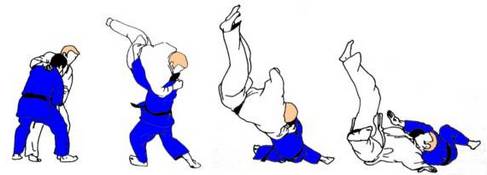Taekwondo is known almost exclusively for its spectacular kicks and acrobatics, but there are many other self-defense techniques that are part of Taekwondo, and can be utilized effectively to fend off an adversary. Some examples are, joint locks sweeps and throws. The teaching of these techniques vary from school to school, and very few Dojangs include them in their regular curriculum, while others teach them exclusively to the higher ranking students or higher belts.
A throw in martial arts, is a term that defines a grappling technique that involves getting the opponent off balance, lifting and/or throwing him/her to the ground, often followed by a “finishing technique”. Some martial arts are well known for their grabs and throws, like Judo, Jujitsu and Tang So Do, but most styles have some kind of throwing technique in their repertoire.
Throws frequently involve a rotational motion, with the practitioner performing the throw disconnecting with the opponent, and ending balanced and on their feet, as opposed to a “takedown”, where both finish on the ground. Throws can also be followed into a top position, in which the person executing the throw does not disconnect from the opponent. Certain throwing techniques called sacrifice throws, and involve putting oneself in a potentially disadvantageous position, such as on the ground, in order to execute a throw.
Neomgigi (넘기기) Throwing down or Tripping up
Georeo-neomgigi (걸어넘기기) Tripping-up Technique or Sweeping Technique
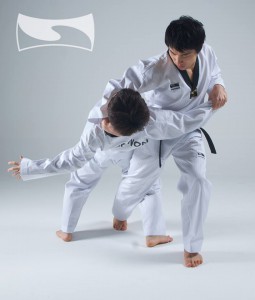
- Balmok-georeo-neomgigi / 발목 걸어넘기기 / Ankle Tripping-up Technique
- Ogeum-georeo-neomgigi / 오금 걸어넘기기 / Inner Knee Tripping-up Technique
Deureo-neomgigi (들어넘기기) Throwing-down Technique
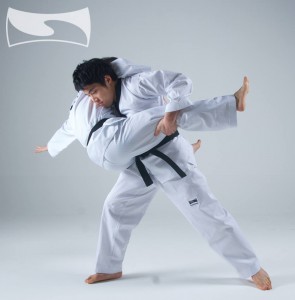
- Ogeum-deureo-neomgigi / 오금 들어넘기기 / Inner Knee Throwing?down Technique
Types of Throws
Most throws are named by describing the by-passing point of the throw (hip throw, shoulder throw, wrist throw etc.), or the nature of effect of the throw on the opponent (heaven and earth throw, valley drop, body drop, etc). Throws are divided into six categories: hand techniques, leg techniques, hip techniques, shoulder techniques, as well as sacrifice throws to the rear and side.
- Shoulder Throw
A shoulder throw involves throwing an opponent over the shoulder.
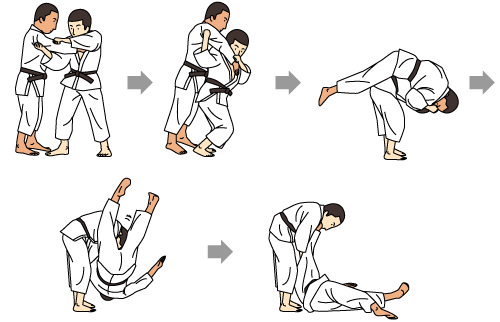
- Leg throws, reaps, and trips
In a leg reap, the attacker uses one of their legs to reap one or both of their opponent’s legs off the ground. Generally the opponent’s weight is placed on the leg that is reaped away. This coupled with the attacker controlling the opponent’s body with their hands causes the opponent to fall over.
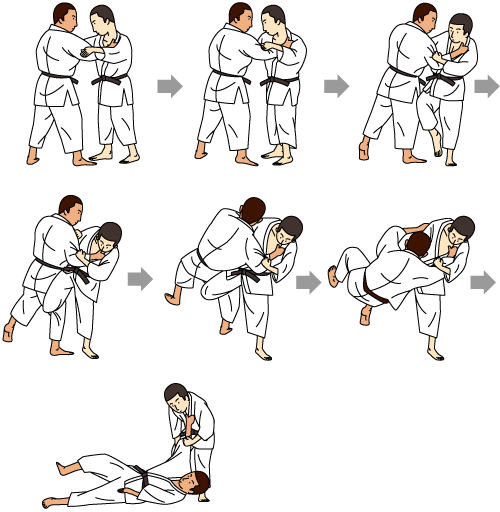
Similar to a leg reap, is the leg hook. This technique, involves hooking and lifting the attacking leg, instead of a reaping action. In a leg reap, the move is smooth, but in a hook, the opponents leg is pulled up first, and then swing away, tripping the opponent and making him fall.
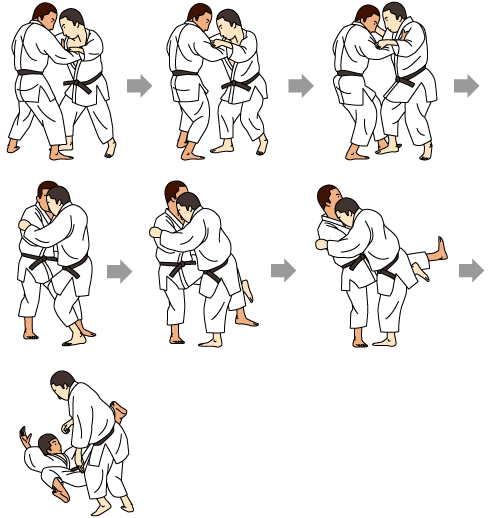
- Hip Throws
A hip throw involves using the thrower’s hip as a pivot point, by placing the hip in a lower position than an opponent’s center of gravity. There are several types of hip throws such as O Goshi, which is often taught first to novices.
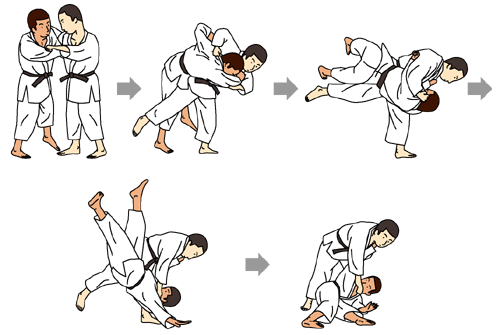
- Sacrifice Throws
Sacrifice throws require the thrower to move into a potentially disadvantageous position in order to be executed, such as falling to the ground. The momentum of the falling body adds power to the throw and requires comparatively little strength, compared to the effect.
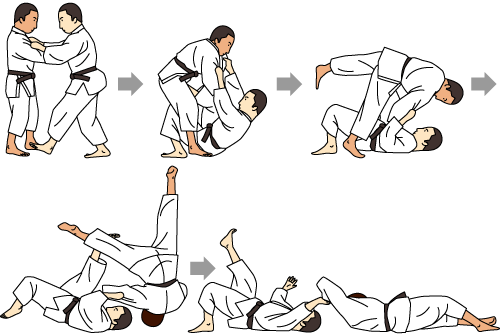
- Pick-ups
Pickups involve lifting the opponent off the ground and then bringing them down again.
